Combat aircraft. Hope soaring in the sky
Yes, the sound of the engines of this plane was not supernatural or terrible. This is not the pulsating sound of the Heinkel-111 motors, not the howling of the diving "Stuka", not the low-frequency hum of the Il-2 motor, in general, everything that was associated during the Second World War with the upcoming total troubles.
The sound of this plane's engines was a symbol of hope for salvation. It doesn't matter who heard it: the crew of a dry cargo ship lost in the endless ice of the North, the pilot of a catapult fighter on a fragile raft in the middle of the ocean, sailors in a boat from a destroyer surrounded by hungry sharks: everyone greeted the sound of Catalina engines with delight.
The fact that the Catalina was not just a good, but an outstanding aircraft is evidenced by the fact that the aircraft was manufactured in a gigantic series of 3 units.
If you look at the number of fighters produced, the figure is generally small. However, ALL participating countries on ALL sides produced fewer flying boats and seaplanes than Consolidated. That is, on one side of the scales of "Catalina", on the other - all other seaplanes and flying boats, regardless of the country.
The second evidence of the aircraft's quality is the fact that about a hundred aircraft are still flying! And not as an exhibit of rarities airshow, but as fire-fighting planes, geodetic services and simply vehicles for delivering tourists to secluded corners.
That is, the aircraft has been in service since 1935, which means "only" 85 years. Few can boast of such a track record, but Lady Catalina can easily.
The name of the plane, by the way, was given by the British. Until 1940 in the United States, the boat had no proper name at all. Therefore, when the British named the plane after a resort island near California, without thinking twice, the Americans began to call it the same.
In general, the fate of Catalina was more than interesting.
The birth began in 1927, when the head of Consolidated Ruben Fleet decided to participate in a competition to create a bomber for the army. To do this, he attracted Isaac Laddon, who had worked with the great Igor Sikorsky.
They created the bomber, and on the basis of the twin-engine record S-37 aircraft, created by Sikorsky for a non-stop flight across the Atlantic.
The biplane bomber lost the competition, but the developments remained. Meanwhile, the plane showed a very impressive flight range, and the developments on it just fell on the table.
In 1932, the US Navy announced a competition for a patrol aircraft and put forward requirements that fit perfectly with the developments of Consolidated. The plane was supposed to fly at least 4 km at a speed of 800 km / h, and its weight should not exceed 160 kg.
The experienced unsuccessful bomber weighed half the weight, so Consolidated rushed to work with no doubts of success. And the result was an airplane. And so original design that Laddon was granted a patent for the aircraft # 92912.

Success has really come. Together with a contract for the construction of a prototype, designated XP3Y-1. This was the first step towards the creation of "Catalina" and it happened in 1933.
The "Consolidated" XP3Y had very decent "smooth" aerodynamics. The auxiliary floats at the ends of the wings were made retractable and became wingtips during harvesting. The aircraft had a skin, partly made of metal, partly of linen. For 1934, it is quite progressive. All steering elements were fitted with trim tabs.
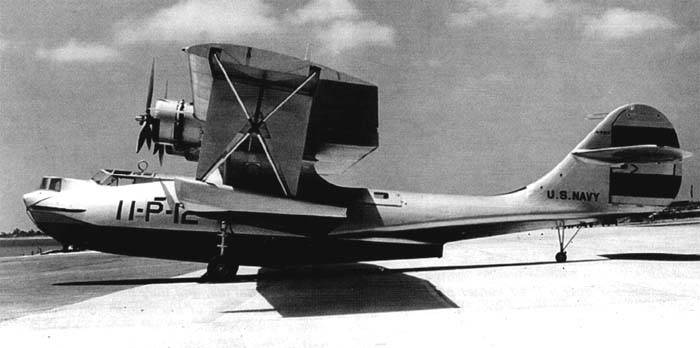
The hull was divided by bulkheads into five compartments, which ensured positive buoyancy of the aircraft even if two compartments were flooded.
The aircraft crew consisted of two pilots, a navigator, a radio operator, a flight engineer, a bombardier gunner and two gunners.
Since the aircraft was planned as a patrol and search one, a galley and bunks were provided for the crew to rest on a long flight or while at the "jump" bases.
The armament was conceived as follows: a 7,62-mm Browning machine gun in the bow rifle installation, from which the shooter-bombardier fired, and one 7,62-mm or 12,7-mm machine gun in the onboard rifle installations.
The bomb armament consisted of bombs weighing from 45 to 452 kg with a total mass of up to 1842 kg on an external sling.
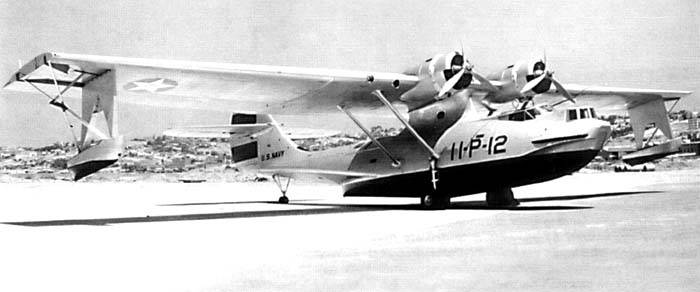
On March 21, 1935, the first flight took place, which was recognized as successful. Further tests began, which showed that with all the positive results shown, the aircraft needs to be improved. Were identified shortcomings in the stability and controllability of the aircraft, yaw yaw poorly affected the results of the bombing.
By the way, water resistance was experimentally tested on tests. When landing in one of the flights, the plane received a hole, but the bulkheads withstood, the car did not sink.
The design was improved, the armament was reinforced with another rifle installation, and the bomb racks were modified.
All this brought results, and on June 29, 1935, Consolidated received an order for 60 PBY-1. Preparations for serial production have begun at the new plant in San Diego.
According to the test results, the representatives liked the plane so much fleetthat, without waiting for the delivery of machines from the first batch, the military department of the fleet on July 25, 1936, signed a second contract for the supply of 50 more vehicles. This happened two months before the first aircraft was delivered to the fleet.
And on October 5, 1936, the first production PBY-1 was accepted by the military crew. The armament of patrol squadrons based in North Island began.
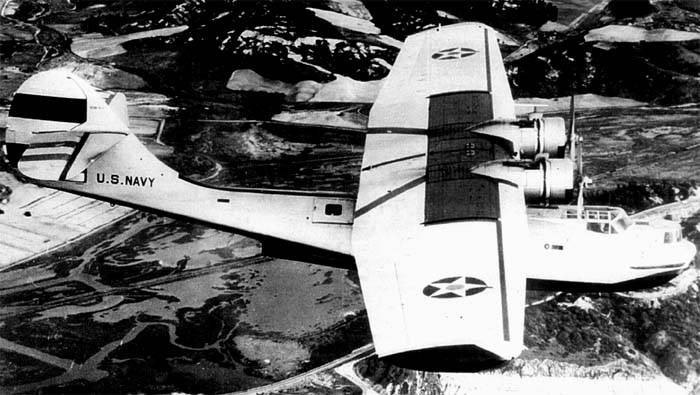
The funny thing is that already in 1939 the aircraft's career could have ended safely. The naval command considered the PBY obsolete and prepared to change it to something more modern. After just 4 years of operation.
The circle of candidates was determined. These were prototypes of flying boats HRVM "Mariner", XPB2Y "Coronado" and XPBS.
The British came to the rescue by ordering 106 flying boats for all: Great Britain, Australia, Canada, France and the Netherlands to Consolidated. And the US Navy was not going to lag behind, ordering 200 more boats in December 1939. A decent number of aircraft were required to patrol the coastal zone.
So the plane ended up in Great Britain, where it got its name - "Catalina". The Americans did not think long and in October 1941 they gave the plane the same name.
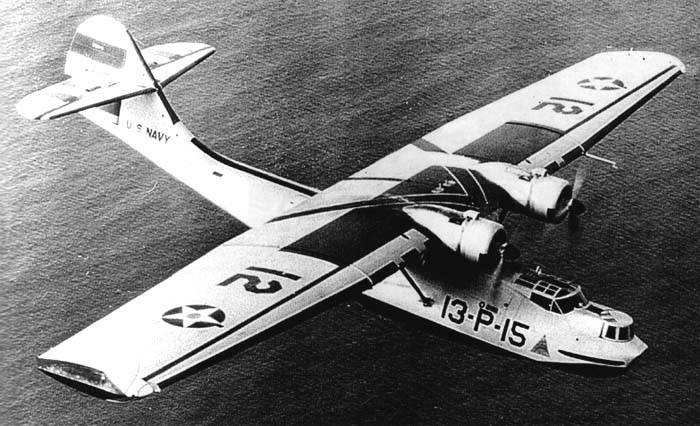
British boats were the first to enter the war. The Americans helped their British colleagues in mastering new technology, even sent a group of 16 instructor pilots to the UK.
It is worth noting the "Russian trace" in stories plane.
One of the boats of the civil commercial GUBA series ended up in the USSR. This happened in 1937, when such an aircraft was urgently needed to search for the missing crew of pilot Levanevsky. A plane with a long range was needed. Renowned New Guinea explorer Dr. Richard Erchbold provided his GUBA, and the plane was piloted by the equally renowned explorer Sir Hubert Wilkins.
At the end of the operation, GUBA remained in the USSR and was used in the polar aviation in the north. The plane was lost during the Second World War on Novaya Zemlya, where it flew with the American military attaché Frenkel. On July 25, 1942, a German submarine launched an artillery raid on the island, and one of the 88 mm shells hit the anchored GUBA.
The flight performance of the amphibian made a good impression, and in 1937 the Soviet government bought three Model 28-2 civilian flying boats from Consolidated and a license to manufacture them. The firm's specialists helped organize the production of the aircraft at the new plant in Taganrog.
The aircraft was named GST (transport seaplane). It differs from the original in a different design of the bow machine gun mount.
There is no exact data on the number of cars produced in Taganrog, it is believed that about 150. Plus, within the framework of Lend-Lease, 205 Catalin were received from the USA.
The aircraft turned out to be a long-liver in the Soviet fleet, some of them served until the 60s. Failing American motors were quite normally replaced with Soviet ASh-82FN.
And somehow, calmly and without scandals, "Catalina" began to conquer the world. Not all, but only that part that was called allies.
The aircraft continued to be refined and modernized, for example, 7,62-mm machine guns were replaced by 12,7-mm Browning, the installation hatches were replaced with blisters, and the rudders were improved.
And it turned out that at the disposal of the Allied forces was an affordable and very good naval patrol aircraft - a flying boat.
Orders were poured into Consolidated in 1941. Australia ordered 18 aircraft, Canada - 36, Holland - 36, France - 30. The French, however, did not have time to receive their Catalins, France ended, and the British took the built aircraft with pleasure.
These aircraft differed from those supplied to the US Navy in the configuration of radio equipment and weapons.
The aircraft was constantly being improved. The landing gear became retractable: the nose wheel into the hull, and the side wheels - onto the fuselage. Attempts to improve the flight characteristics led to a lengthening of the hull, a new wing and a tail unit. The nose turret with a machine gun has become retractable.
In fact, it was already a new machine, called PBN-1 "Nomad", which means "Nomad". But the name did not catch on, and the plane was called "Catalina" version 4.
The last modification was the sixth - PBY-6A. The aircraft received an anti-icing system, improved aerodynamics, additional booking and radar. 30 of these boats were delivered to the USSR.
Combat application
The first to be baptized by fire were the Catalins of the Royal Navy. And - quite successfully. It was the WQ-Z Catalina of the 209th Squadron that was honored to discover the Bismarck in May 1941. By the way, the co-pilot during this flight was the American instructor Ensign L.T. Smith.
American pilots carried out routine training work, which was violated by the adoption of the so-called Neutrality Act in late 1939 and the introduction of a Neutral Patrol in coastal waters in this regard.
In general, the patrol service turned out to be a very useful thing: it allowed the pilots to gain experience. It will be useful to them in the near future.
Of course, the American Catalins took the first blow at Pearl Harbor. The Japanese, regularly crossing with the Catalinas, appreciated the aircraft's capabilities very highly, and therefore destroyed them at the first opportunity.
In Pearl Harbor, after the Japanese air raids, only three aircraft out of 36 survived. 27 were irretrievably lost and 6 were seriously damaged.
In the Philippines, things were no better, where the Catalins were able to meet Japanese aircraft in aerial combat. And immediately the battles showed a large number of weak points of flying boats.
The absence of protected tanks and crew armor put the American aircraft on a par with the Japanese. That is, both of them got lost very simply.
The Catalina had a very well positioned defensive weaponry. But there was a nuance that nullified all the benefits. These are machine guns powered from standard 50 rounds magazines. When the shooter ran out of cartridges, and he began to change the store, his actions were clearly visible through the blister. The Japanese very quickly learned to use this, shooting aircraft at precisely these moments.
Given the lack of armor, the Catalins got off quite easily.
In addition, the lack of good communication between the crew and at least some kind of backward view for the pilot made it difficult to maneuver in battle.
December 27, 1941 saw the first use of "Katalin" as strike aircraft. Six PBY-4s took off from Ambon (Dutch East Indies) to attack Japanese ships in Jolo harbor on Sulu. Each of the aircraft carried three 226 kg bombs.
The Japanese spotted the American planes in time and opened anti-aircraft fire. Fighters were raised. As a result, each "Catalina" entered targets independently, under fire from below and from above. It is not surprising that 4 aircraft were shot down and only two managed to break away from the fighters.
Two Japanese fighters shot down and two bomb hits are too high a price to pay.
All Catalins could carry aircraft torpedoes. A torpedo sight was also developed, which was installed behind the windshield of the cockpit, allowing him to aim and determine the drop point.
For some time, "Catalins" were used as night torpedo bombers, but as new and more efficient aircraft arrived, this application was abandoned.
Most successfully "Catalina" was used precisely as a night scout. During the day, Japanese aviation and anti-aircraft guns interfered with the work of the planes, but at night the Catalina showed itself in all its glory.
Several factors played a role here. The main one, of course, is the appearance of decent radars in service. But the fact that the Japanese used the dark time of day to supply their troops on the islands in the Pacific Ocean also played an equally important role.
The Black Cat units, whose planes were painted black, caught the Japanese supply convoys and pointed attack ships and planes at them. But the patrolmen themselves often launched attacks, fortunately there was something.
"Black cats" acted very successfully throughout the war.
The rescue Catalins were no less, and perhaps more successful. Search and rescue operations for pilots and sailors in the ocean were named "Dumbo", after the flying elephant from the Disney cartoon.
At first "Dumbo" was a code word in radio communications, and then it was assigned to all rescuers, since they were not against it. When the very intense battles in the Solomon Islands began, the American naval command connected the Catalin rescue teams to the strike groups of the aircraft so that the flying boats ply at a distance and respond to every downed aircraft.
Dumbo worked very efficiently. A group of three Katalin, based at the Tulagi island airfield, rescued 1 pilots from January 15 to August 1943, 161.
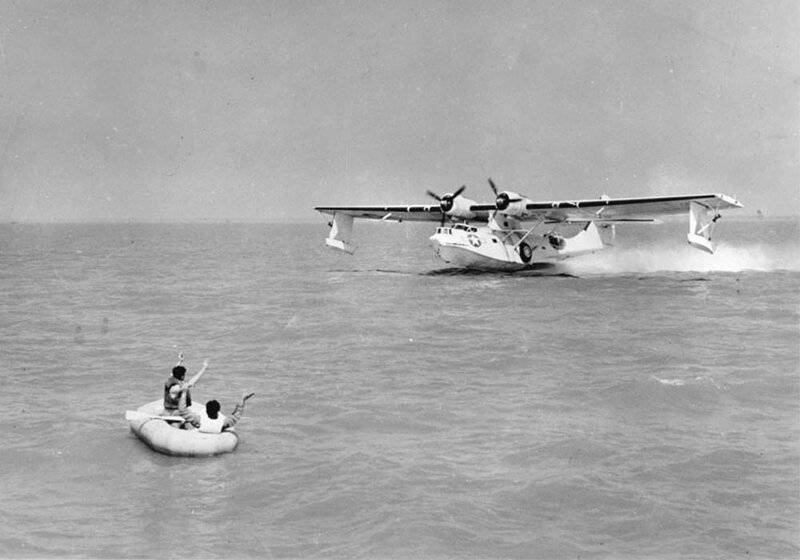
In general, the work of the rescuers was highly appreciated. One naval pilot of the time said: "When I see Catalina in the sky, I always get up and salute."
In the Far North, in the Arctic, Catalins very rarely engaged in attacks - simply because there were no targets for them. The main job for an airplane is finding its own. The aircraft searched for and guided the crews of polar convoy ships that were lost in the Arctic. We picked up sailors from sunken ships and downed planes. Conducted ice reconnaissance and meteorological observations.
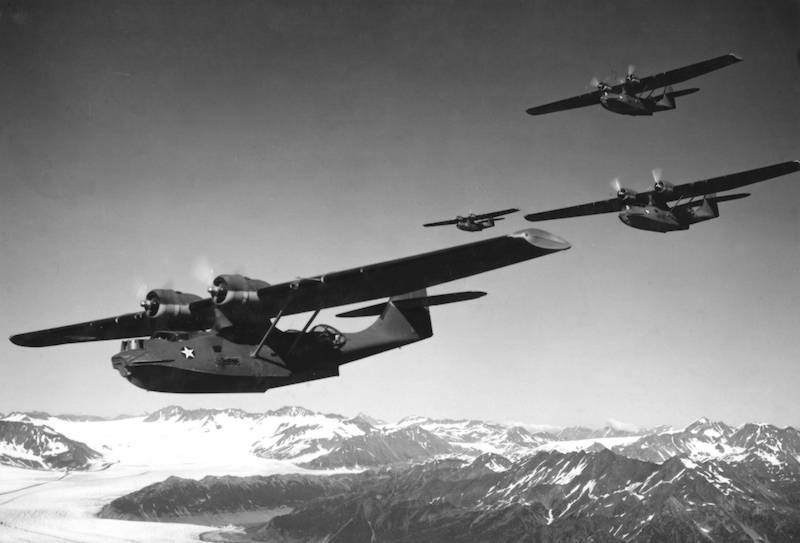
The Catalina, with its long range, proved to be a very useful aircraft in this regard. It was the Catalins that found and rescued more than 70 people from the Marina Raskova transport and two minesweepers sunk by a German submarine.
It was not for nothing that I said at the very beginning that the hum of the Catalina engine meant salvation for many. In the Far North, especially.
After the end of the Second World War, "Catalina" somehow very quickly left all fleets. On the one hand, it was replaced by more modern machines, on the other, the world itself was changing, in which jet and turbojet aircraft were becoming more and more confident.
So quietly and imperceptibly, this truly remarkable plane went down in history, on whose account there are definitely more lives saved than destroyed.
But in private hands, the plane continues to serve today. The Danes used a squadron of eight aircraft until the mid-70s in Greenland. The Canadians have adapted the Catalina to extinguish fires. Brazil used it as a transport plane to the hard-to-reach areas of the Amazon Delta.
After the war, it turned out that if you dismantle unnecessary radio equipment, armor, weapon, it turns out to be a very decent amphibious truck.
And, as I said above, some flying boats stubbornly resist time and continue to serve even today. 85 years after the first Catalina appeared.
If this is not a reason for pride, then I generally do not know what to be proud of then.
Consolidated has developed many aircraft models throughout its life. Some became known as the Dominator and Liberator bombers. But, perhaps, "Catalina" is the best that this company could develop.
LTH PBY-5A
Wingspan, m: 31,70.
Length, m: 19,47.
Height, m: 6,15.
Wing area m: 130,06.
Weight, kg:
- empty aircraft: 9 485;
- normal takeoff: 16 066.
Engine: 2 x Pratt Whitney R-1830-92 Twin Wasp x 1200 hp
Maximum speed, km / h: 288.
Cruising speed, km / h: 188.
Practical range, km: 4.
Practical ceiling, m: 4 480.
Crew, pers .: 5-7.
Armament:
- two 7,62 mm machine guns in the bow;
- one 7,62mm machine gun firing backwards through a tunnel in the fuselage;
- two 12,7 mm machine guns on the sides of the fuselage;
- up to 1814 kg of depth or conventional bombs or airborne torpedoes.
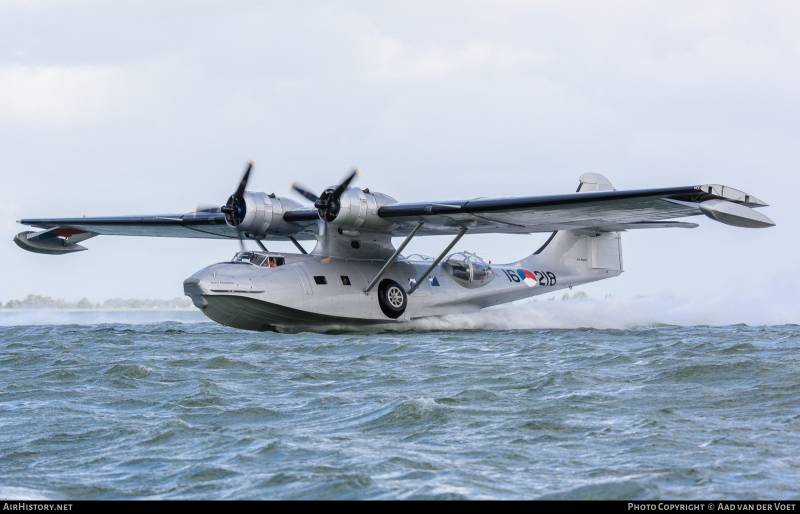
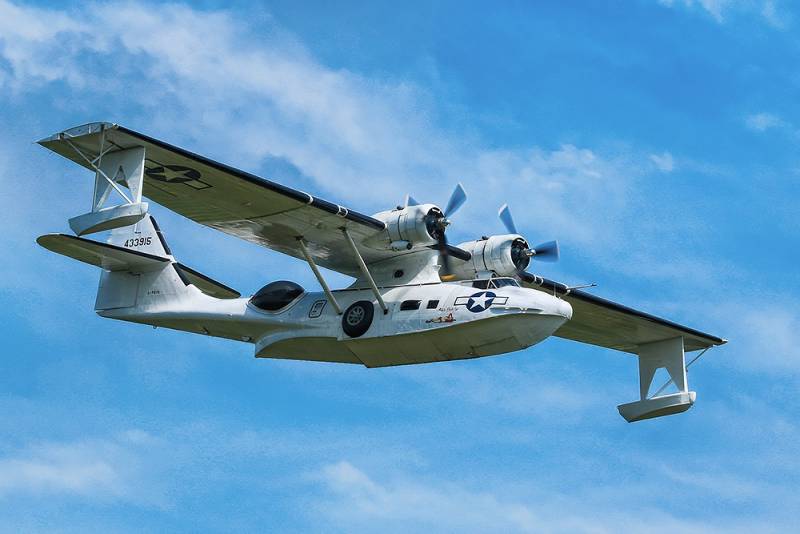
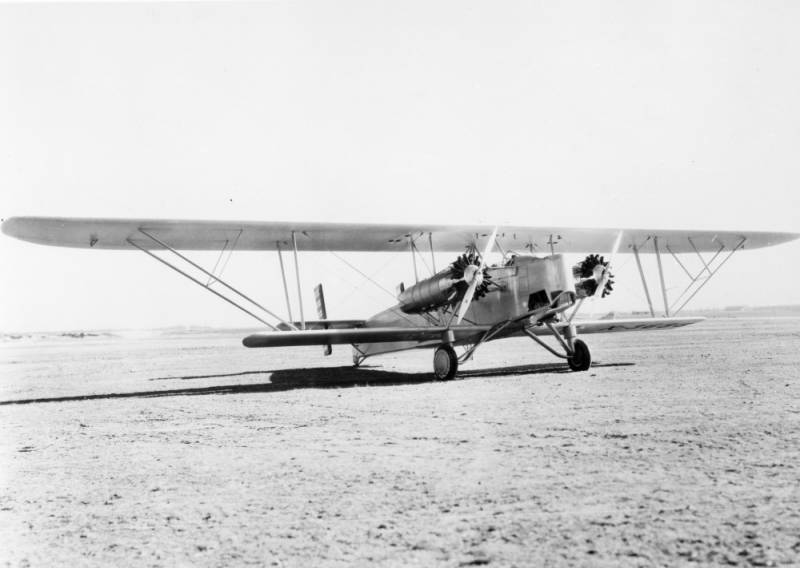
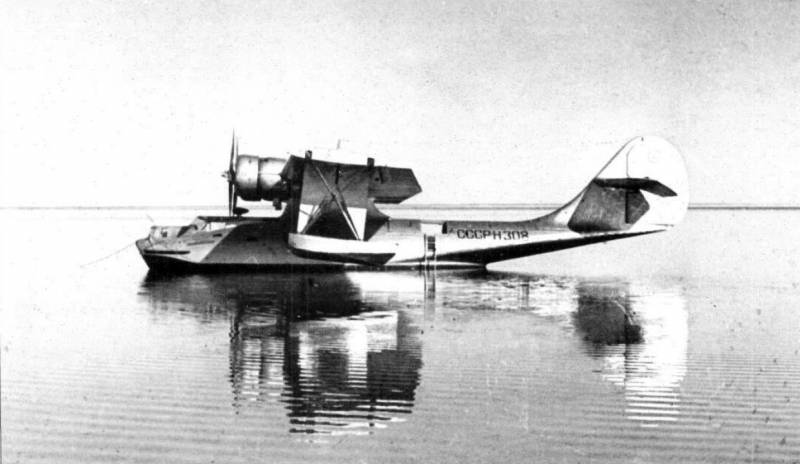
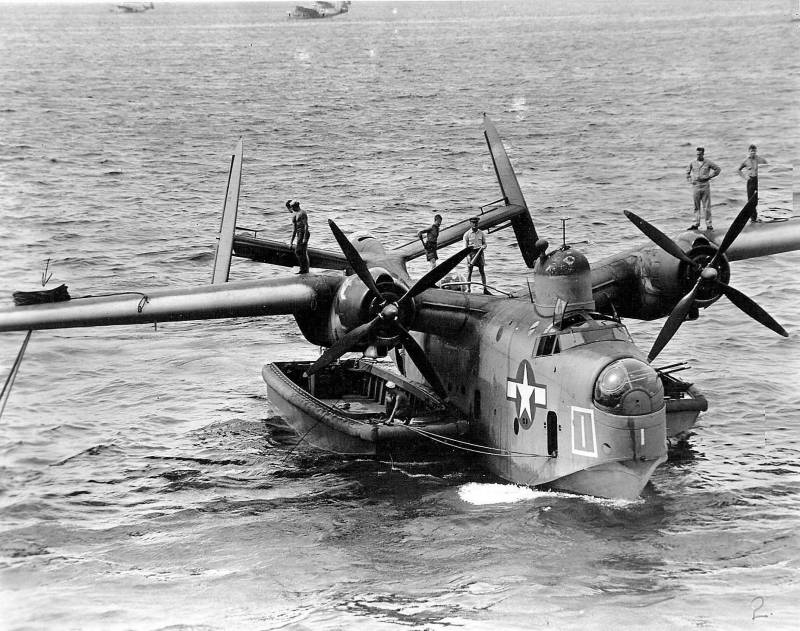
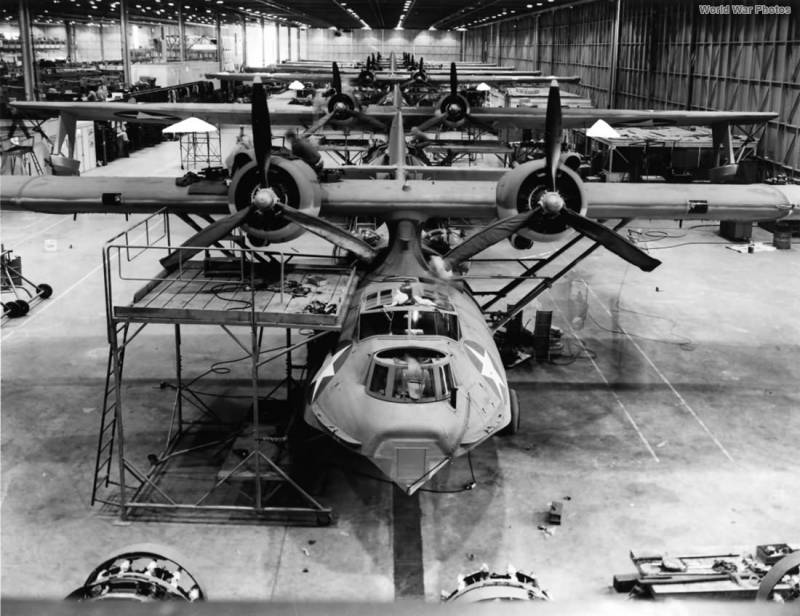
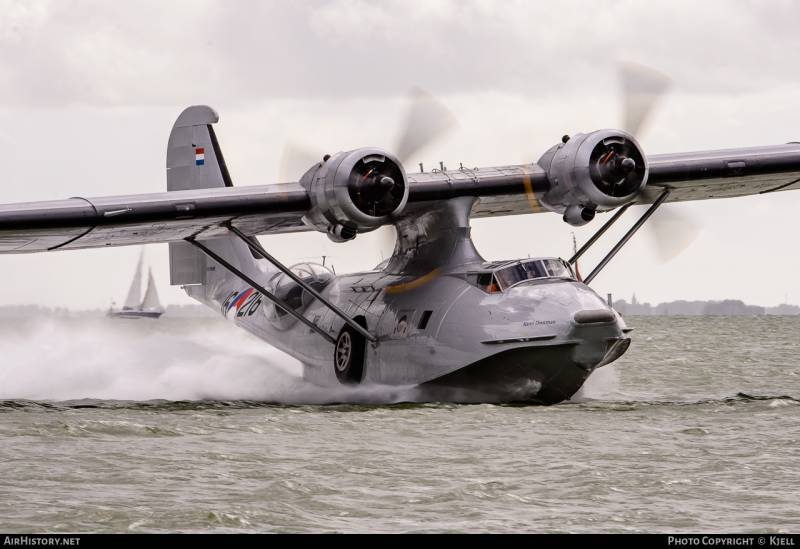
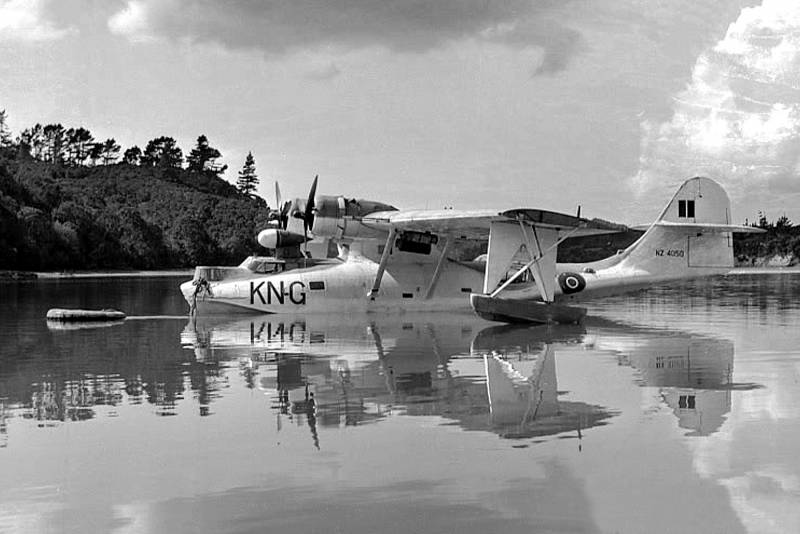
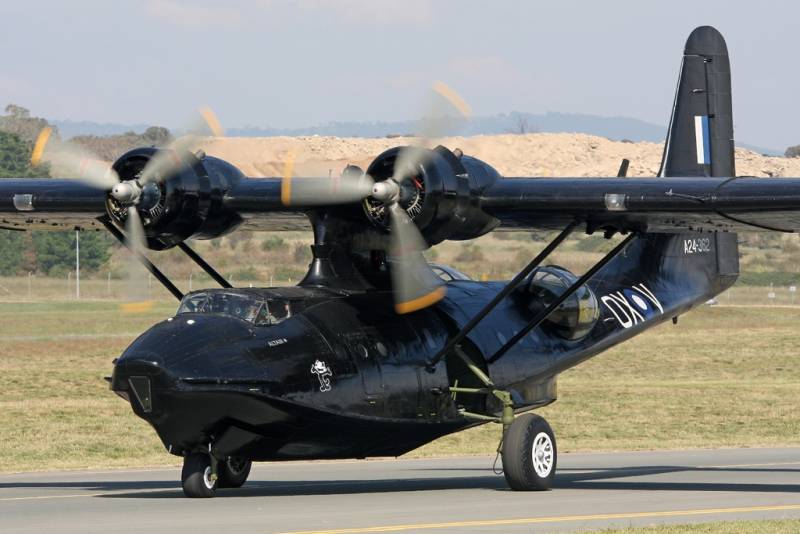
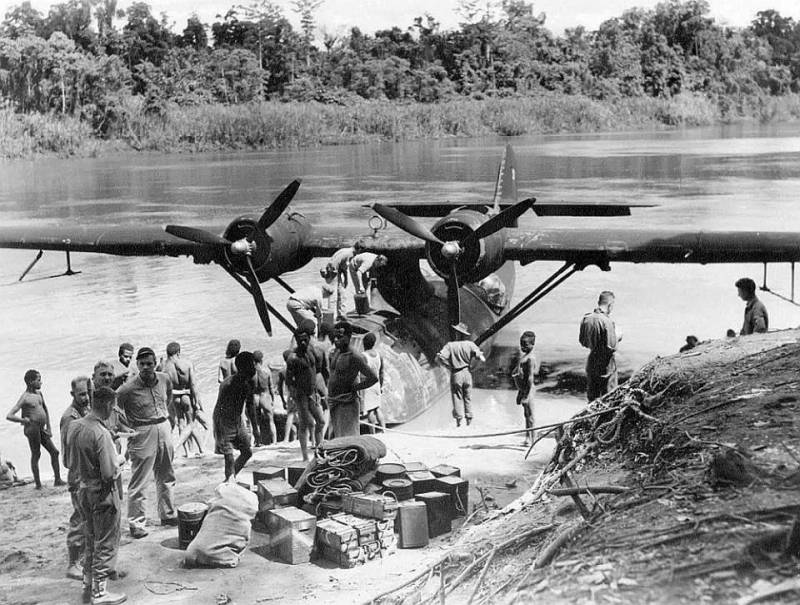
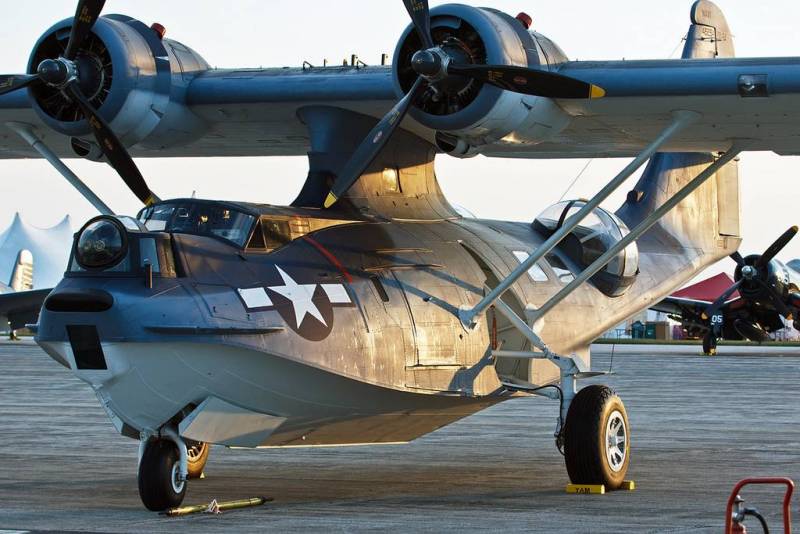
Information